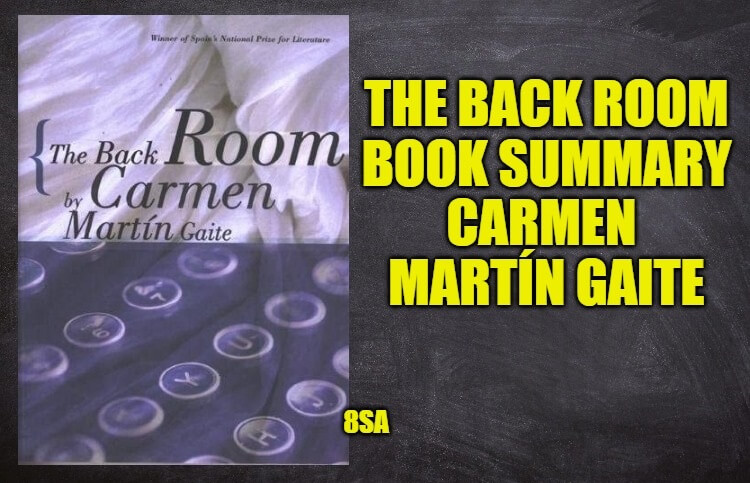What is the summary of the book El Cuarto de Atras (The Back Room) written by Carmen Martín Gaite? Information about the summary, review, characters and analysis of El Cuarto de Atras (The Back Room).

El Cuarto de Atras (The Back Room)
“El Cuarto de Atrás” (The Back Room) is a novel by Spanish author Carmen Martín Gaite. The novel is set in a small Spanish town during the years of the Franco dictatorship and tells the story of a group of young women who spend their days in the back room of a haberdashery, gossiping and dreaming of a better life. The novel explores themes of friendship, rebellion, and the search for freedom and identity during a time of oppression. The novel is a deep insight on how Spanish culture was at the time, and how people struggled in the shadow of the regime.
Summary
“El Cuarto de Atrás” is set in a small Spanish town in the 1940s and 1950s, during the years of the Franco dictatorship. The novel tells the story of a group of young women who work in a haberdashery, a shop that sells small goods for sewing and needlework. These women, who are all in their early twenties, spend their days in the back room of the shop, where they gossip and dream of a better life.
The novel is narrated by one of the women, Julia, who looks back on her youth and the experiences she shared with her friends. The novel is set in a time of great political and social upheaval in Spain, and the women are deeply affected by the dictatorship and the restrictions it places on their lives.
The novel explores the theme of friendship, as the women bond over their shared experiences and struggles. They find solace in each other’s company, and their relationship is a source of strength for them.
Another important theme in the novel is rebellion, as the women struggle against the constraints of the dictatorship and the expectations placed on them as women. They begin to challenge the status quo and question the values that have been imposed on them. They feel trapped in their small town and the narrow-mindedness of their society.
In their desire for freedom, the women also begin to explore their own identities, and the novel explores the theme of self-discovery. They begin to question the roles they have been assigned by society and begin to imagine new possibilities for themselves.
Despite the political and social oppression of the time, the novel has a sense of hope and optimism. The women’s spirit of rebellion and their deep connection to one another ultimately help them to break free from the constraints of their society and to find their own way.
In general, the novel is a very personal and introspective story, but at the same time, is a reflection on the Spanish culture in a specific time and place, and how people’s daily lives were affected by the regime. All the themes and situations are presented in a smooth and natural way. Also, the author made a good use of metaphor and symbolism throughout the novel, to give depth and richness to the story.
Characters
The main characters in “El Cuarto de Atrás” are a group of young women who work in a haberdashery in a small Spanish town during the 1940s and 1950s. The novel is narrated by one of the women, Julia, who is the protagonist and the main point of view of the story.
Julia is a young woman who is deeply affected by the dictatorship and the restrictions it places on her life. She is introspective and thoughtful, and her reflections on her youth and the experiences she shared with her friends form the basis of the novel.
The other main characters in the novel are Julia’s friends:
- Felicidad: She is the eldest, and therefore the most experienced, and is known for her outspokenness. She is the one who defies the most the dictatorship, and she is very critical about the society and its values.
- Paulina: she is more reserved, and quieter than the others, but she has a strong personality. She is always there to listen and to give a good advice.
- Rosa: She is the youngest, and the one that is more innocent and naive. She is fascinated by everything new and different.
- Mercedes: she is the one that is more concerned with her appearance and is always the one to have the last word.
- Encarnación: the one that is more traditional and conformist, and she is more concerned with fitting into society than the others.
All these characters are presented in a very natural and realistic way, and their personalities are well developed throughout the novel, as the story progresses we can see how they change and how their actions are influenced by the situations they live.